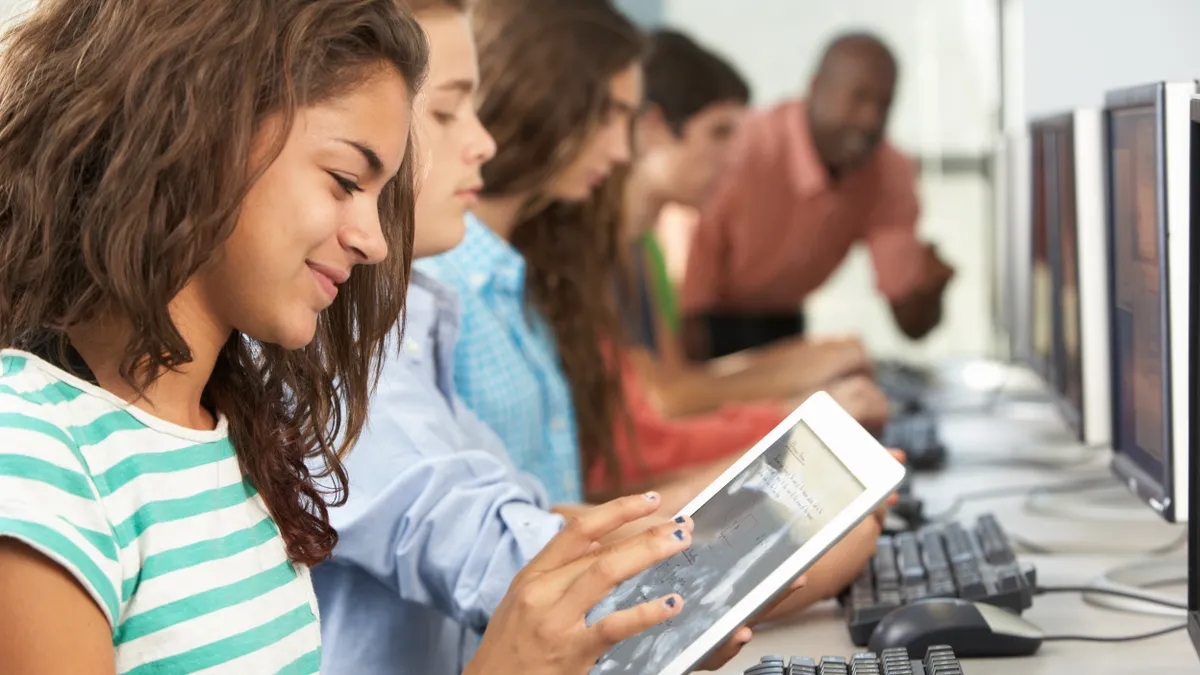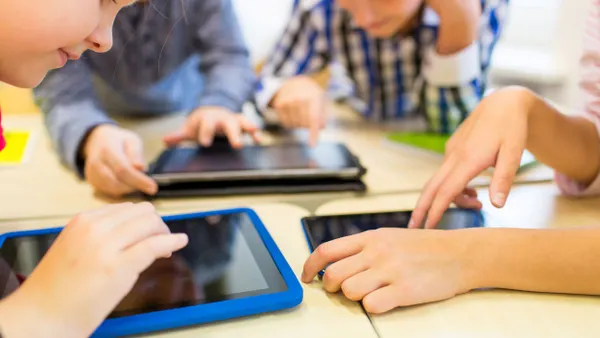Dive Brief:
- According to the "Speak Up 2016 Research Project for Digital Learning" report from Project Tomorrow, 56% of students report using technology to learn outside of school more often than at school.
- The report, which details student digital learning habits and preferences, also shows rising student demand for a wider variety of online course and subject options among those who have taken online courses in math, science and English, eSchool News reports.
- Also among the findings: Chromebook numbers have doubled since 2014, students in 6th grade and beyond are increasingly using mobile devices for self-directed activities including research (84%) and note-taking (40%), 42% lament the amount of rules around tech usage, 66% still prefer conferencing with teachers in the classroom, and 68% of boys and 58% of girls in grades 3-8 want to learn how to code.
Dive Insight:
With the increasing prevalence of technology in classrooms and homes, it's no surprise that student preferences are increasingly in favor of tech-driven solutions. But those advanced methods have also brought a need for greater focus on soft skills around digital citizenship.
Of particular concern in the past year has been students' ability to think critically and perceive bias in online sources. According to this Project Tomorrow report, for example, only 41% of students reported being able to spot bias in online content. Educators, however, can play a significant role in tackling this problem, as highlighted by a recent Common Sense Media survey that found while students prefer getting news online, 48% trust educators over news organizations.
But, as Kaltura VP of Product Learning and Collaboration Jeff Rubenstein argues, students should be exposed to real-world problem-solving situations that require real-world solutions with creative thought in addition to picking up those digital citizenship skills. It's not enough that they passively consume content via devices, they must be actively engaged.







 Dive Awards
Dive Awards






